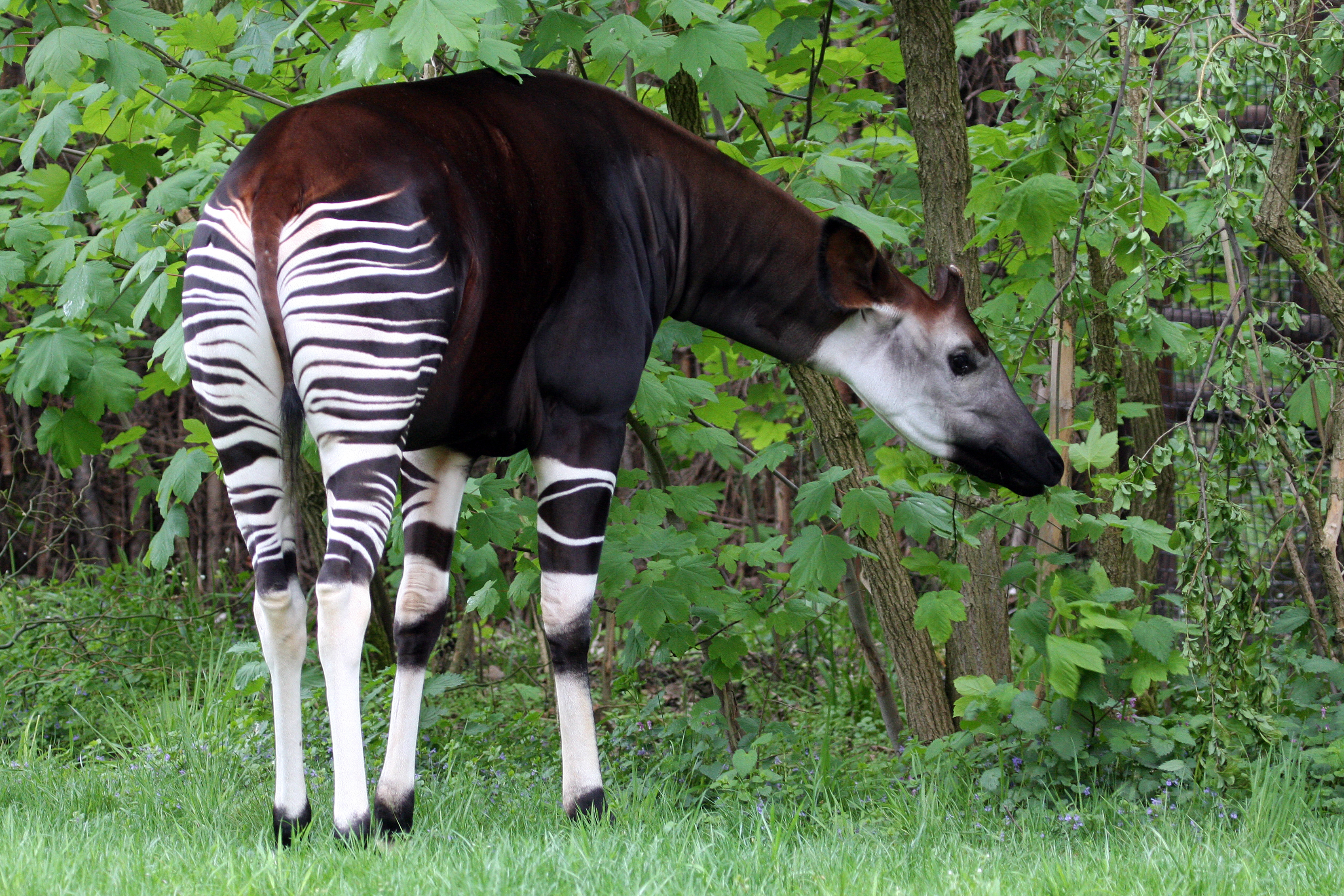
When it comes to African animals trying to survive the brutal realities of poaching and habitat loss, we often think of rhinos, elephants, and other popular creatures that have historically been featured in Disney movies or on magazine covers.
Okapi, however, don’t usually spring to mind. With their unique physical makeup and their secluded nature, these animals are elusive and hard to study in their natural habitat… yet they’re every bit as endangered as those other, aforementioned creatures.
That’s why the Okapi Conservation Project has created a day of recognition for these mammals. In celebration of the second annual World Okapi Day on Oct. 18, here are 13 things you never knew you wanted to know about these awe-inspiring animals.
What are okapi?
These large, rainforest-dwelling mammals look like something Hagrid from Harry Potter would conjure up. With their brown bodies and black-and-white striped legs, okapi resemble zebras, but it’s giraffes they share a true kinship with. In fact, okapi (pronounced oh-Cop-ee) are the only living relatives of giraffes. Both have large, upright ears that help them detect the first sounds of trouble, and both have long tongues that enable them to strip leaves from brush.
Do they go by other names?
Yep. Okapi are also known as the forest giraffe, Congolese giraffe or the zebra giraffe.
Do they have horns, too?

Like giraffes, male okapi have a horn-like structure called an ossicone, while the females have bumps.
But do they walk the walk?
Eagle-eyed animal lovers may have noticed that giraffes simultaneously move both right limbs forward and both left limbs forward when walking, rather than alternating them like other quadrupedal animals. Okapi have the same giraffe-like gait, and both animals will gallop like a horse whenever they need to speed things up.
Where do they live?
A native of the Democratic Republic of Congo (DRC), okapi aren’t found anywhere else in the world. As the DRC’s national animal their natural habitat is the Ituri Rainforest, a dense tropical rainforest located on the northeastern lip of the Congo River basin. Okapi tend to hang out wherever the vegetation is thick, but they have also been known to meander towards riverbeds for food and drink.
What do they eat?
Okapi eat more than 100 different types of plants, mushrooms, seeds, twigs, and fruit, but these herbivores also lick clay along the riverbank or eat charcoal off scorched trees in order to keep their mineral counts up. All together these ruminants (animals with a four-chambered stomach) eat between 45 and 60 pounds of vegetation each day.
What are they like as calves?

A typical okapi pregnancy lasts roughly 430-435 days. Aside from being adorable, newborn okapi can stand within the first 30 minutes of life and will nurse within the first hour. Interestingly they don’t usually defecate for the first time until they’re about four-to-10 weeks old, which can sometimes lead to calves suffering from rectal prolapse.
Why haven’t I heard of them before?
Despite their revered status in the DRC, okapi weren’t officially discovered by western scientists until the 1900s thanks to their penchant for living solitary lives and for taking off at the first sounds of humans. Hence their nickname, the “African unicorn.”
What hunts them?
Humans and leopards are the biggest threats to okapi, but the animals seem to have figured out a strong defense against the latter, at least. Their brown-and-white hind marks serve as a natural camouflage against the predators, and when the animals are first born they’ll stay in one place and “nest” for up to eight or nine weeks despite their ability to walk, just so that they can gather up their strength against foes.
What other random facts should we know about okapi?

They have stinky feet due to scent glands that leave behind a tar-like substance to mark their territory, and their tongues are truly remarkable: they measure in at 14-to-18 inches long, allowing them to even lick their own ears.
Meanwhile, okapi mothers can communicate with their young by releasing infrasound (sound undetectable to the human ear), and although most of the animals have 46 pairs of chromosomes per cell, some can instead have 44 or 45 without showing any signs of physical abnormalities.
How are they holding up in this mad, mad world?
Not well, unfortunately. In 2013 the IUCN Red List of threatened species listed okapi as endangered—five years after they probably should have made such a declaration. Deforestation and poaching have caused the okapi population to decrease by 50 per cent in less than 10 years. Today, scientists believe there are anywhere from 10,000 to 50,000 okapi left in the world. Official conservation efforts are in place but the ongoing civil war in the DRC makes any real conservation efforts tough.
What do you mean?

Armed rebels and militants in the area remain a real threat. It was only last year that Mai Mai rebels (an umbrella term for militias who carry out illegal poaching and mining activities in the area), attacked a large group of journalists and park rangers in the Okapi Wildlife Reserve. Four Congolese park rangers and one porter were killed in the heartbreaking ambush.
What about okapi in the rest of the world?
While okapi are really only found in the DRC, international zoos have been known to carry an animal or two. That doesn’t make their survival any easier, mind you. Earlier this month a two-month-old okapi at a Florida zoo died because of acute renal failure.
How can we help?
Okapi are hunted for their meat and skin, so avoiding those products is a start. Meanwhile, there are plenty of worthwhile organizations out there trying to make a difference, including The Okapi conservation Project, which could always use donations.
